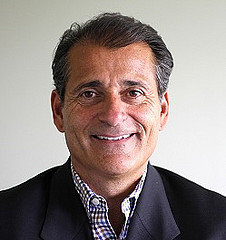1. Cybersecurity
The medical and healthcare sector collects highly sensitive patient information, which puts the industry in the crosshairs of cybersecurity attacks. There were 2,546 healthcare data breaches involving more than 500 records in the United States between 2009 and 2018, resulting in the in the exposure and theft of 189,945,874 healthcare records – this equates to more than 59 percent of the nation’s population. In 2017 alone, the medical and healthcare sector experienced more than 350 data breaches that exposed 4.93 million patient records.

While experts are still finalizing the breach figures for 2019, it looks to be the worst year yet. Today, the healthcare industry accounts for four out of every five data breaches, according to HIPPA Journal. The cost of these breaches to the industry will likely reach $4 billion in 2020.
Black Book Market Research LLC recently surveyed 2,876 security professionals from 733 provider organizations to identify the reasons healthcare organizations continue to experience data breaches and cyber attacks. They found that budget constraints prevented the replacement of legacy software and devices, which left them more vulnerable to attack. “It is becoming increasingly difficult for hospitals to find the dollars to invest in an area that does not produce revenue,” said the founder of Black Book, Doug Brown, in a press release. Ninety percent of hospital representatives in the survey said that their IT security budgets have remained unchanged since 2016.
2. Transparency
Transparency has been a hot topic for several years, and will continue to be a burning issue into 2020 and beyond. A 2016 survey by Accenture found that 91 percent of consumers wanted to know their out-of-pocket costs before they received care.
Triggered by the Executive Order on Improving Price and Quality Transparency in American Healthcare to Put Patients First issued in June of 2019, the Centers for Medicare & Medicaid Services (CMS) issued new rules to increase price transparency.
The first rule, Calendar Year (CY) 2020 Outpatient Prospective Payment System (OPPS) & Ambulatory Surgical Center (ASC) Price Transparency Requirements for Hospitals to Make Standard Charges Public Final Rule, requires that hospitals provide patients with easily accessible information about standard charges for services and items offered. Standard charges must be available in a single data file that other computer systems can read. Hospital websites must display “shoppable services” information in a consumer-friendly format. This rule takes effect on January 1, 2021.
CMS’s second proposed rule, the Transparency in Coverage rule, would impose price transparency requirements on insurers.
3. Patient-friendly Payment Models
Patient financial responsibility for outpatient, and emergency department care is on the rise, with out-of-pocket costs increasing by 12 percent in 2018, according to TransUnion.
This shift towards patient financial responsibility could bog down invoice and payment processing, particularly for practices that do not have an in-house invoicing and payment processing system geared towards accepting payments from patients. These practices will need to build patient portals, secure payment processing, and other infrastructure to handle such payments and fund administrative costs of maintaining these technologies. Furthermore, they will need to ensure their payment portals and processing systems are compliant with guidelines that protect patient information.
Unfortunately, 90 percent of healthcare providers still use paper and manual payment processes, according to a 2018 InstaMed survey. To make matters worse, 70 percent of consumers said they were confused by medical bills. Not surprisingly, 77 percent of providers said it takes more than a month to collect a payment. To be paid on time, providers must overcome the obstacles of upgrading their payment processing systems and clarify billing.
With a little planning – and a bit of luck – those in the healthcare industry can overcome these challenges and put themselves in a great position for the rest of the decade.
To View Frank Magliochetti Press Releases Please CLICK HERE
Frank Magliochetti owes his professional success to his expertise in two areas: medicine and finance. After obtaining a BS in pharmacy from Northeastern University, he stayed on to enroll in the Masters of Toxicology program. He later specialized in corporate finance, receiving an MBA from The Sawyer School of Business at Suffolk University. His educational background includes completion of the Advanced Management Program at Harvard Business School and the General Management Program at Stanford Business School. Frank Magliochetti has held senior positions at Baxter International, Kontron Instruments, Haemonetics Corporation, and Sandoz. Since 2000, he has been a managing partner at Parcae Capital, where he focuses on financial restructuring and interim management services for companies in the healthcare, media, and alternative energy industries. Earlier this year, he was appointed chairman of the board at Grace Health Technology, a company providing an enterprise solution for the laboratory environment.

Mr. Frank Magliochetti MBA
Managing Partner
Parcae Capital
www.parcaecapitalcorp.com
www.frankmagliochetti.com

SOURCES:
https://blackbookmarketresearch.com/health-data-security-and-privacy











